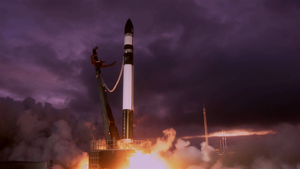The "Space Debris Monitoring And Removal Market Outlook 2025-2034: Market Share, and Growth Analysis By Debris Size Range, By Orbit Type, By End User" has been added to ResearchAndMarkets.com's offering.
Space Debris Market Poised for Growth in Global Sales
The space debris monitoring and removal market is projected to surge from a valuation of USD 1.6 billion in 2025, with expectations of reaching a substantial USD 4 billion by 2034, fueled by a CAGR of 10.5%.
With space commercialization accelerating through increased satellite launches and space missions, the risk of collisions from defunct satellites and debris is more critical than ever. The industry, comprising surveillance technologies, predictive software, and physical removal solutions, is transforming the once-theoretical field into a pragmatic market due to heightened regulatory interest and technological development.
In 2024, significant attention focused on space debris management due to high-profile near-miss incidents. Governments like the U.S., EU, and Japan expanded their SSA networks to improve orbital accuracy, while commercial players such as LeoLabs and Astroscale showcased crucial technologies like active debris capture and deorbiting devices. NASA's collaborations with startups to address satellite life extension and disposal reflect broader industry efforts.
PSignificant advancements were made with AI-enhanced tracking systems processing large data sets to predict collision risks effectively. ESA's ClearSpace-1 mission slated for 2026 signifies growing momentum in active debris removal. Meanwhile, international discourse on deorbit compliance and shared responsibility is gaining traction, pointing to emerging regulations and standards.
Looking to the future, the market is set for expansion with regulatory backing and technological progress. The first operational debris removal missions will serve as critical proof of concept, crucial for subsequent service contracts, especially for satellite operators keen on following mitigation guidelines. The multifunctionality of robotic servicing spacecraft, predictive collision avoidance enabled by AI, and integration into automated fleet management are trends reshaping the industry. Nonetheless, legal challenges surrounding ownership, salvage rights, and sovereignty will require international cooperation.
Key Insights in Space Debris Monitoring and Removal Market
- AI-powered SSA systems are increasingly used to predict and manage collision risks in real time.
- Technologies such as robotic arms for debris removal are transitioning from demonstration to operational trials.
- Public-private partnerships are accelerating the development and implementation of debris mitigation technologies.
- Dual-function servicing platforms are economically transforming space operations.
- International efforts towards standardization and enforcement of space sustainability are intensifying.
- Rapid satellite constellation expansion increases collision risk, spurring demand for innovative solutions.
- Predictive analytics and deconfliction tools are becoming indispensable for government and commercial operators.
- Technological innovation in AI and robotics enhances the feasibility of debris capture and management.
- Legal ambiguity in international schemes for debris creates cooperation barriers, delaying full market development.
Key Attributes:
| Report Attribute | Details |
| No. of Pages | 150 |
| Forecast Period | 2025 - 2034 |
| Estimated Market Value (USD) in 2025 | $1.6 Billion |
| Forecasted Market Value (USD) by 2034 | $4 Billion |
| Compound Annual Growth Rate | 10.4% |
| Regions Covered | Global |
Space Debris Monitoring and Removal Market Segmentation
- By Debris Size Range: 1cm To 10cm Debris, Greater Than 10 cm
- By Orbit Type: Medium-Earth Orbit (MEO), Geostationary Earth Orbit (GEO)
- By End User: Defense
- By Geography: North America, Europe, Asia-Pacific, Middle East and Africa, South and Central America
Companies Featured
- Raytheon Technologies
- The Boeing Company
- Lockheed Martin Corporation
- Airbus SE
- Mitsubishi Electric Corporation
- Northrop Grumman Corporation
- British Aerospace systems
- L3Harris Technologies Inc.
- IHI Corporation
- Teledyne Technologies
- Thales Alenia Space
- Ball Aerospace & Technologies Corp.
- Maxar Technologies Inc.
- Japan Aerospace Exploration Agency
- The Aerospace Corporation
- Kratos Defense & Security Solutions
- Occupational Health Branch
- Electro Optic Systems Holdings Limited
- Rocket Lab Limited
- Rustungs Unternehmen AG
- Surrey Satellite Technology Limited
- ClearSpace SA
- Tethers Unlimited
- Kongsberg Satellite Services
For more information about this report visit https://www.researchandmarkets.com/r/g0jllf
About ResearchAndMarkets.com
ResearchAndMarkets.com is the world's leading source for international market research reports and market data. We provide you with the latest data on international and regional markets, key industries, the top companies, new products and the latest trends.
View source version on businesswire.com: https://www.businesswire.com/news/home/20250716359418/en/
Contacts
ResearchAndMarkets.com
Laura Wood, Senior Press Manager
press@researchandmarkets.com
For E.S.T Office Hours Call 1-917-300-0470
For U.S./ CAN Toll Free Call 1-800-526-8630
For GMT Office Hours Call +353-1-416-8900







